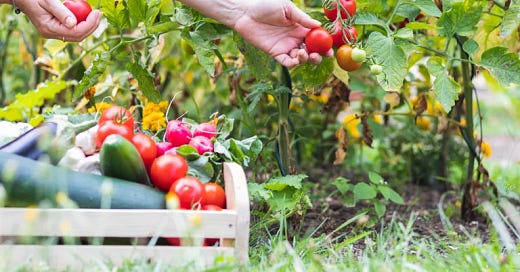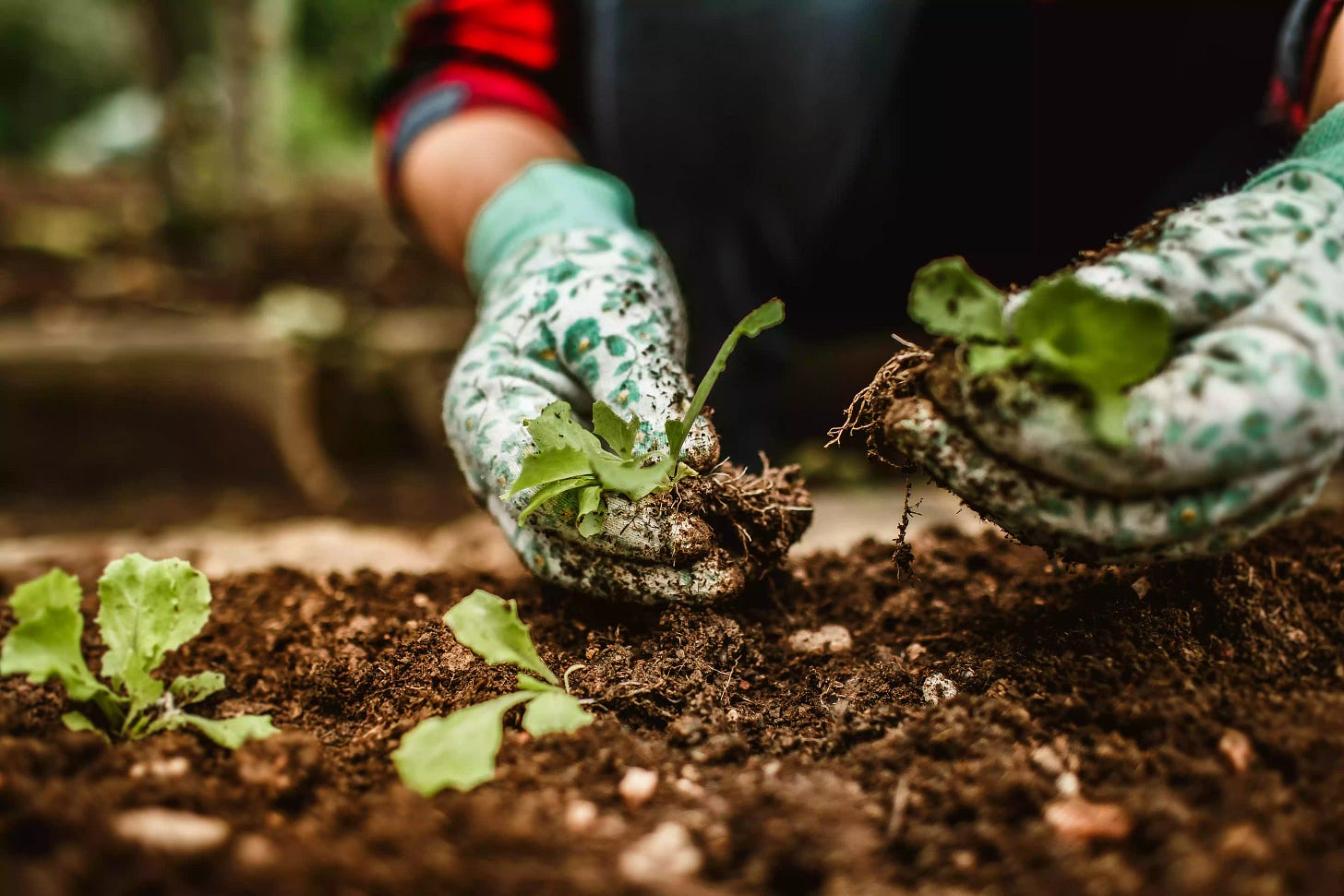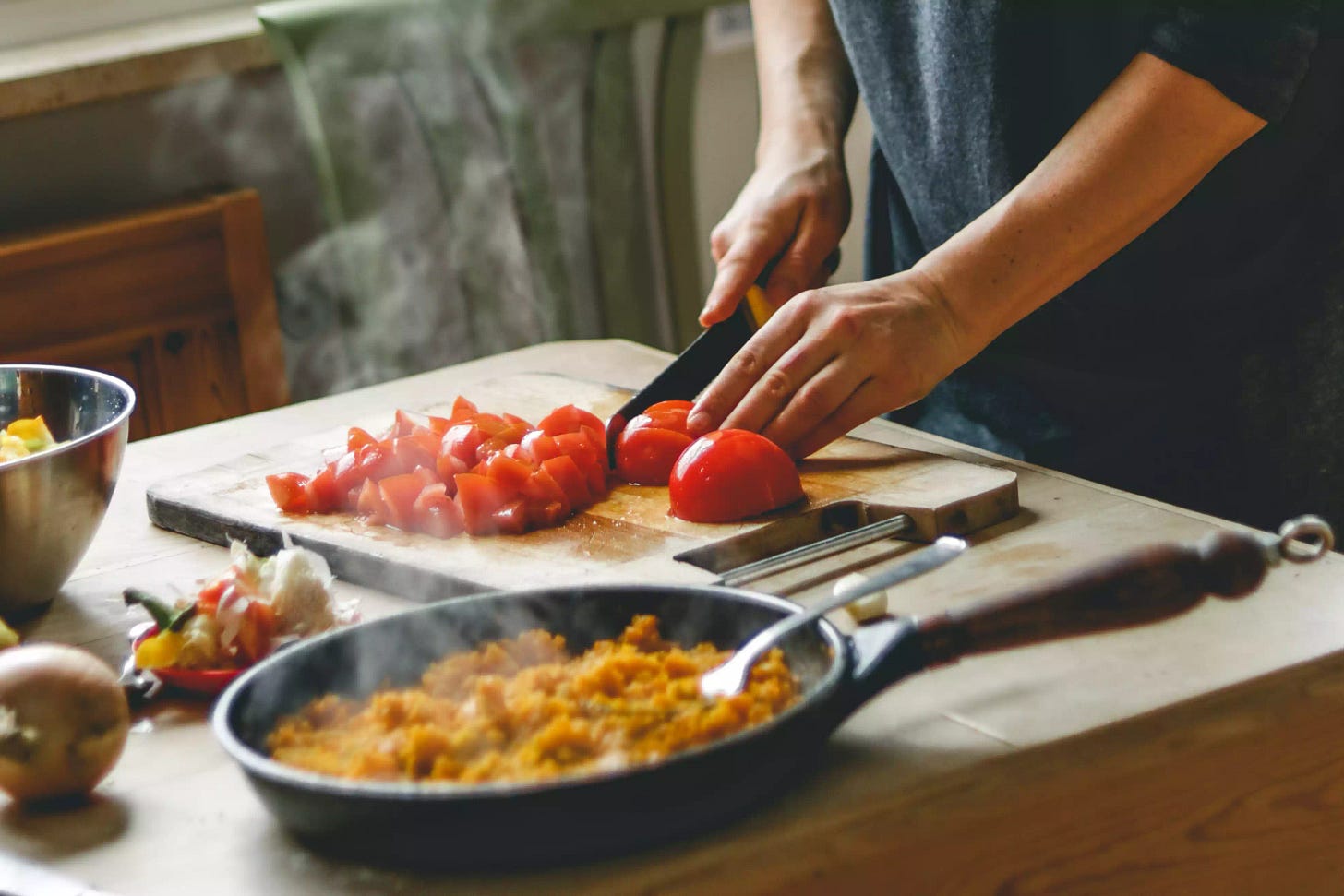At the beginning of the 20th century, more than half of Americans lived in rural areas. How we lived and what we ate were deeply intertwined. But today, fewer than 2% of people live on farms or ranches. We designed this guide to help you grow your own food, no matter where you live. By 2014, around one in three American households grew their own food—the highest participation in a decade.
Challenges of Home Food Gardening
These new gardeners face unique challenges compared to older generations. Because the majority of Millennials live in urban areas and rent instead of own their homes, it can be difficult for them to find space or proper sun exposure to grow edible garden plants. These gardeners must cultivate food in their kitchens or, if they’re lucky, in community gardens.
The generation gap also exposes itself as a wealth gap, not just in property ownership but also in wealth accumulation. Millennials make significantly less money than any generation before them, but they bear the cost of inflation, including food.
Corn, soy, wheat, and rice subsidies make processed foods far less expensive than fresh fruits and vegetables. For people on a budget, affording the luxury of buying plants or seeds and waiting for them to produce edible food may not be feasible.
The same holds for composting, which has size limits if confined to an indoor space. Without state or local ordinances that require municipal waste management to include composting, a genuinely circular food system remains a dream.
Still, with a bit of research and some creativity, almost anyone can create an affordable edible garden, no matter how small.
The Benefits of Growing Your Own Food
Growing your own food provides benefits to both personal and planetary well-being. It can help you create a circular waste stream, educate you on your local climate, save you money and most important, you will be self-sufficient in food.
Getting Started
Getting your kitchen garden started is easy. Once you know where you’ll be growing, you can plan out your fruits and veggies and celebrate your climate victory.
Select Your Garden Location
You don’t need a plot of land to grow your own food. You can grow inside or outside, so long as you have access to sunlight and water. Even a well-lit window can grow herbs and other vegetables in small containers.
Understand Your Hardiness Zone
Edible gardens understandably look different in South Dakota than they do in Florida. USDA’s Plant Hardiness Zone Map guides gardeners to the plants most likely to thrive in their zip code.
By understanding how your microclimate will help or hinder your gardening efforts, you can build a resilient and diverse garden that can provide food for years. Go another step further by including the concept of bioregionalism in designing your kitchen garden.
What Is a Bioregion?
A bioregion is a geographic area defined by its biological and topographical features while considering how the humans who live there interact with the natural world. This concept contrasts with boundaries defined by political, economic, or cultural distinctions.
Map Your Sunlight
Whether you’re planting in your backyard, on your balcony, or in your bedroom, what you need is good sun exposure. Many edible plants, especially fruit trees, require six hours of full sun that can be split up during the day.
Scout the perfect garden location by creating a sun map. Pay attention to how sunlight affects your whole gardening area as some parts may have sun and shade at different times of the day. Sunlight also changes throughout the year, so it’s often valuable to map your sun once per season to get an accurate annual picture.
If you’ve got more shade than sun, don’t despair. Lettuce and other greens love the shade.
Select Your Plants
After all that research, you’re ready to choose which plants will work best for your edible garden. If you’ve got a yard, you have your choice of beans, squashes, root vegetables, fruit trees, berries, herbs, and cruciferous vegetables. Container gardeners often favor herbs, tomatoes, peppers, onions, greens, and dwarf fruit trees.
Consider planting a mix of foods instead of a singular crop. Polyculture gardens have higher yields than monocultures. You may also want to plan for a bit of crop rotation through the growing seasons.
If you’d like expert guidance on what to select, buy your starter plants at a specialty nursery where the employees are knowledgeable about home food gardening.
Consider your container size when choosing your plants. A limited space garden can support peppers, herbs, kale, and greens grown in small containers. Beans, tomatoes, and cucumbers, on the other hand, need containers at least two feet in diameter.
Choose Good Soil
If your yard garden has deep, well-drained, quality soil, you can plant food in it. Otherwise, you may opt for purchased soil in raised beds (just as container gardeners do). You’ll see a difference when using high-end organic soil wherever you grow.
Quality soil comes at a price, but it’s a worthwhile investment for beginning gardeners. Keep in mind that while topsoil for ground gardening stays stable year after year, potting soil decomposes. You’ll need to add soil to your containers after the first year.
Use the Right Tools
Nothing’s more frustrating than trying to accomplish a task with the wrong widget. Garden tools such as pruners, watering cans, and trowels make the elbow-grease of gardening that much smoother and more enjoyable. Don’t forget your gloves (and always wash your hands after handling soil).
Water Deeply and Infrequently
Instead of feeding your plants a little water all the time, deep and infrequent watering encourages root growth. However, if you live in a particularly hot climate or your plants are in terracotta containers (which dry out more quickly than glazed containers), you may still have to water up to twice daily if the top two inches of soil are dry.
Ensure your containers have good drainage to prevent the roots from becoming waterlogged. Avoid wasting water by practicing mindfulness—stop when water starts to fill the bottom saucer instead of blindly drenching your plants.
Building berms, or raised mounds of soil, can help keep water around the plant for yard gardeners. Container gardeners can keep the plant slightly higher than the soil height for best drainage.
Feed Your Plants Nutrients
All food gardens need additional nutrients and should receive light fertilization once a week. Food gardens in containers lose more nutrients in watering than fruits and veggies plants in the ground, and they require additional organic fertilizer.
Both container and yard gardens do well when properly mulched because mulch helps keep nutrients and moisture in the soil. Good mulching practice is becoming more and more important as more parts of the country experience droughts caused by climate disruption.
Enjoy Your Harvest
Nothing tastes better than the food you grew yourself, and after all your hard work gardening, you deserve a celebration. Invite some friends over for dinner. Maybe you'll inspire another gardener to take up the trowel.
That’s for today’s post, in future I will bring you more important post such as_
15 Best Balcony Plants
Top 10 Vegetables to Grow in Your Home Garden
17 Fall Vegetables to Grow in Your Garden
Which crops are good for gardening?
How to Build a Container Garden
and more. Subscribe to my Newsletter to get updated.
Also read:








